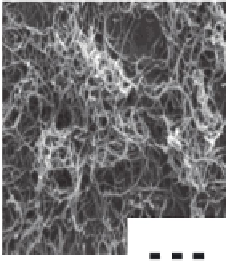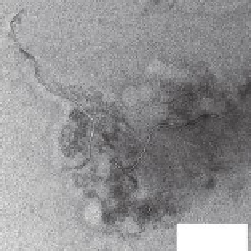Biomedical Engineering Reference
In-Depth Information
TABLE 18.1
Areas for Detection and Identiication before Selective Quantiication Can Begin
Release Scenario
(Anticipated
Degradation
Mechanism)
Method to Simulate the
Lifecycle to Induce,
Detect, and Quantify
Release
Key Findings and Research
Needs
Morphology of Typical Released Fragments
Outdoor use
(UV degradation,
hydrolysis and weak
mechanical forces)
Accelerated dry or wet
weathering (ISO 4892;
International Organization
for Standardization 2011),
followed by immersion to
induce release into water,
detected by AUC, TEM,
EDX, LD, XPS
Nguyen et al. (2011) found a
collapsed layer of CNTs on
CNT-epoxy after UV
irradiation
Weathering tests are highly
standardized for plastics and
coatings, but the CNT network
formed on the composite
essentially eliminates the
release of CNT (Nguyen et al.
2011)
Methods to induce a release
during or after degradation are
exploratory, and miss selective
quantiication
500 nm
Hirth et al. (2013) performed
wet and dry weathering of
CNT-polyurethane followed
by immersion and shaking:
release of polymer-CNT
fragments, but free CNTs
only by sonication
200 nm



Search WWH ::

Custom Search